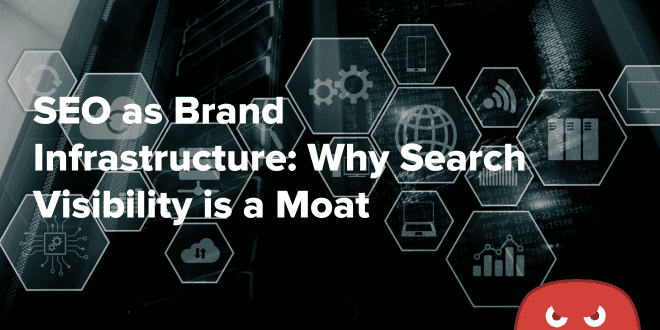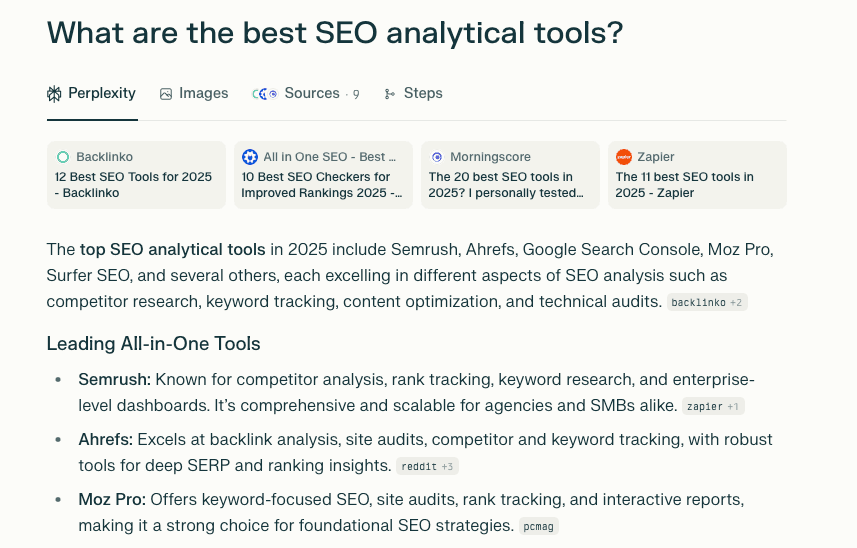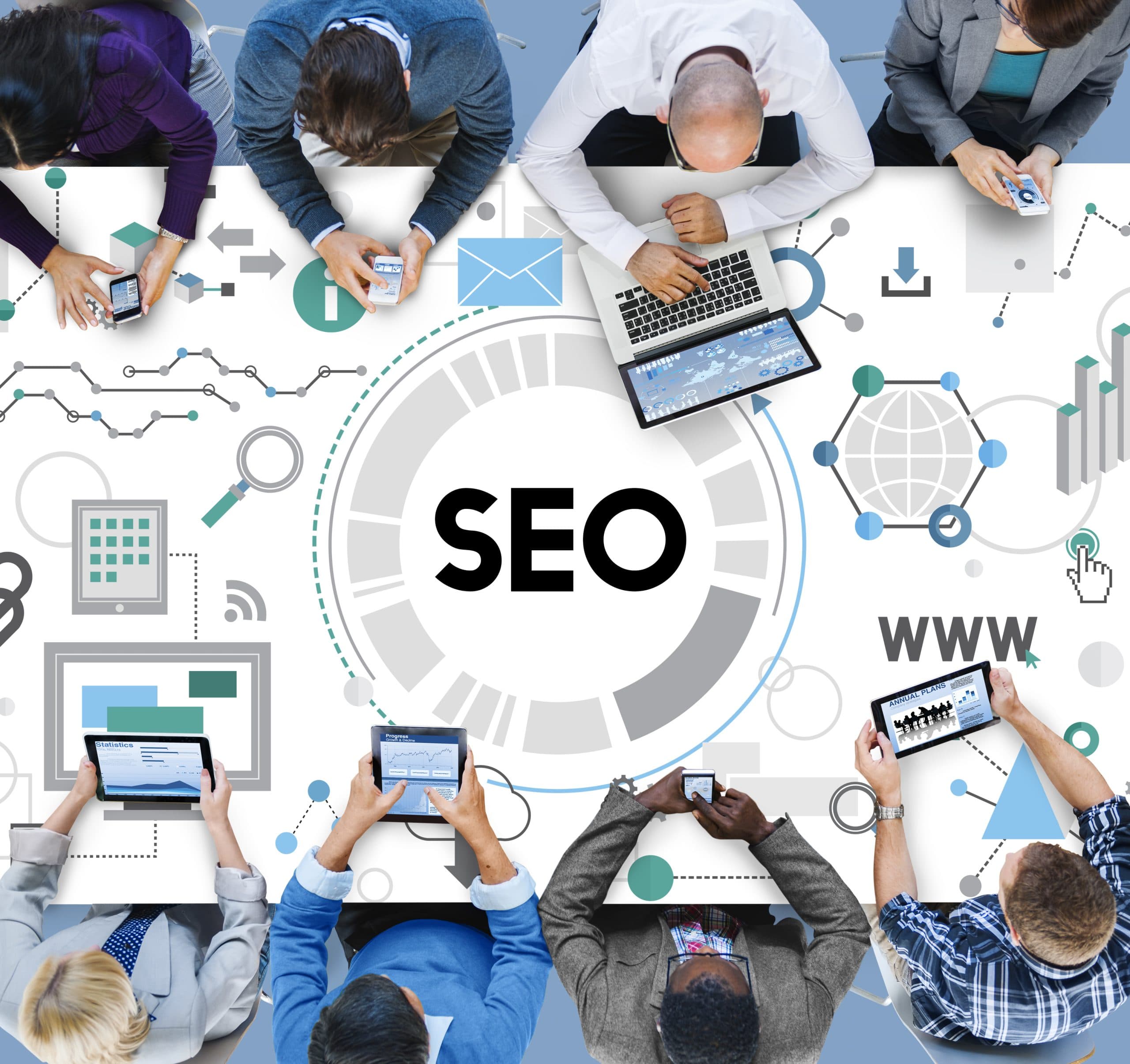
SEO as Brand Infrastructure: Why Search Visibility is a Moat
The Compounding Power of Search Equity
Building topical authority in a niche takes lots of time and effort, which is actually a good thing (although it may not seem that way if you’re starting from scratch). What we mean is that search equity isn’t something you can build overnight. Instead, it’s something that takes years of consistent effort to achieve. If you’re able to put in the blood, sweat, and tears that it takes to become a thought leader in your field, you’ll have built considerable search equity. This is an advantage because it means new competitors won’t be able to dethrone you by publishing a few pieces of high-quality content or picking up a couple of authoritative brand mentions. If they want to truly compete, they’ll have to put in the same amount of time and hard work that you did. Even if they do, you already have a massive head start. By the time they reach the level you were already at, you’ll have moved on to greener pastures. This is the compounding power of search equity, and it fits perfectly into our moat analogy. Search equity helps you retain your marketing position by placing a moat consisting of content and authority between you and the competition. You’re essentially creating a tough barrier of entry for new players in your field. That’s not to say that nobody will be able to compete with you, just that you’ll have secured a place of your own in the market. Whenever someone prompts an AI tool about topics related to your products and services, your website’s content will be among the first it cites. The best part? The more trust you build with LLMs and search engines through consistent content and entity recognition, the more likely they are to directly recommend your brand to customers, which brings us to our next point.Why AI Makes Brand Infrastructure Even More Important
Now that AI search tools are extremely popular, having a solid brand infrastructure online is even more important. As we just mentioned, LLMs can encourage customers to try out your brand when you build up enough trust and credibility. For example, take a look at the brands Perplexity recommends when we ask it about SEO analytics tools: These aren’t just citations; they’re direct brand recommendations, and they have a significant impact on consumer buying behavior.
Nearly 60% of customers report using AI assistants like ChatGPT to help them shop, and many trust AI’s recommendations more than those of personal friends.
Translation?
Play your AI SEO cards right, and you can transform AI tools like ChatGPT into loyal brand advocates.
In other words, they won’t just cite your blog posts to generate quick definitions and answers for user prompts; they’ll actively push prospects toward your brand.
Once you reach a certain level of trust and credibility, you’ll get locked into the ‘default set’ of AI brand recommendations for your particular niche. At this point, the competition faces a daunting uphill battle (or a long swim through your moat) if they want to dethrone you.
Also, with the way LLMs assign authority and ‘rank’ content, a solid brand infrastructure is a necessity, not a luxury.
That’s because AIs don’t have a PageRank-style system where they measure raw link authority. On search engines like Google, a domain’s ‘authority’ is derived from two parts:
These aren’t just citations; they’re direct brand recommendations, and they have a significant impact on consumer buying behavior.
Nearly 60% of customers report using AI assistants like ChatGPT to help them shop, and many trust AI’s recommendations more than those of personal friends.
Translation?
Play your AI SEO cards right, and you can transform AI tools like ChatGPT into loyal brand advocates.
In other words, they won’t just cite your blog posts to generate quick definitions and answers for user prompts; they’ll actively push prospects toward your brand.
Once you reach a certain level of trust and credibility, you’ll get locked into the ‘default set’ of AI brand recommendations for your particular niche. At this point, the competition faces a daunting uphill battle (or a long swim through your moat) if they want to dethrone you.
Also, with the way LLMs assign authority and ‘rank’ content, a solid brand infrastructure is a necessity, not a luxury.
That’s because AIs don’t have a PageRank-style system where they measure raw link authority. On search engines like Google, a domain’s ‘authority’ is derived from two parts:
- The number of referring domains and backlinks pointing at it
- The quality of the referring domains and backlinks pointing at it
- Digital PR to earn brand mentions on editorial websites
- Contextually relevant link insertions
- Creating consistent, topically-aligned content (to build topical authority)
- Scannable, answer-based content that uses structured data
SEO vs. Paid Advertising: Which is Actually Defensible?
 Pay-per-click (PPC) ads are enticing to new businesses because they provide instant visibility.
Instead of slaving for months to create content worthy of high rankings and AI citations, paid ads let you cut to the front of the line immediately.
There’s no denying that this is advantageous, which is why we recommend that new brands engage in paid ads until their organic efforts catch up.
That last part is key, because we never advocate that a business rely on paid ads indefinitely.
Here’s why.
You’ll never develop a dominant marketing position by relying on paid ads.
If a competitor wants to take your spot, they can simply outbid you.
Moreover, the second you run out of funding to fuel your paid advertising campaign, your visibility disappears overnight.
With paid ads, your visibility is purely transactional and has no compounding value.
You’re on rented ground, and you stand no chance of planting any roots to grow.
Organic search visibility, both on Google and AI tools, is the exact opposite. Sure, it takes a lot of time and effort to build, but it has staying power.
High rankings and AI citations earned organically won’t disappear overnight and will continue to provide value well into the future. This is why organic search visibility has a compounding effect.
All the content, backlinks, and brand mentions you build will remain online indefinitely, granting you the ability to obtain market dominance.
Here’s a table breaking down the differences:
Pay-per-click (PPC) ads are enticing to new businesses because they provide instant visibility.
Instead of slaving for months to create content worthy of high rankings and AI citations, paid ads let you cut to the front of the line immediately.
There’s no denying that this is advantageous, which is why we recommend that new brands engage in paid ads until their organic efforts catch up.
That last part is key, because we never advocate that a business rely on paid ads indefinitely.
Here’s why.
You’ll never develop a dominant marketing position by relying on paid ads.
If a competitor wants to take your spot, they can simply outbid you.
Moreover, the second you run out of funding to fuel your paid advertising campaign, your visibility disappears overnight.
With paid ads, your visibility is purely transactional and has no compounding value.
You’re on rented ground, and you stand no chance of planting any roots to grow.
Organic search visibility, both on Google and AI tools, is the exact opposite. Sure, it takes a lot of time and effort to build, but it has staying power.
High rankings and AI citations earned organically won’t disappear overnight and will continue to provide value well into the future. This is why organic search visibility has a compounding effect.
All the content, backlinks, and brand mentions you build will remain online indefinitely, granting you the ability to obtain market dominance.
Here’s a table breaking down the differences:
| Organic SEO | Paid ads | |
| Provides overnight visibility | ❌ | ✅ |
| Has a compounding effect that yields a long-term ROI | ✅ | ❌ |
| Visibility doesn’t rely on funding | ✅ | ❌ |
| Competitors face a steep battle to outrank you | ✅ | ❌ |
- Invest in paid ads early on to gain visibility.
- Start an organic SEO strategy in tandem with paid ads.
- Wean off paid advertising once your organic efforts start to pay off.
Investing in the Right Assets: What Builds Modern Brand Infrastructure
 The SEO tactics of yesteryear are no longer sufficient for building a modernized online brand infrastructure.
Gone are the days of spamming keywords and building thousands of average-quality backlinks to get ahead.
Even Google’s regular search algorithm has incorporated NLP (natural language processing) and machine learning elements to become more adept at identifying spam and irrelevant content.
LLMs simply take this to the next level.
Here are the assets you need to build a deep moat around your brand’s market position:
The SEO tactics of yesteryear are no longer sufficient for building a modernized online brand infrastructure.
Gone are the days of spamming keywords and building thousands of average-quality backlinks to get ahead.
Even Google’s regular search algorithm has incorporated NLP (natural language processing) and machine learning elements to become more adept at identifying spam and irrelevant content.
LLMs simply take this to the next level.
Here are the assets you need to build a deep moat around your brand’s market position:
- Evergreen content. You should create evergreen pieces (meaning they don’t become outdated) for basic definitions and concepts related to your niche. Use simple Q&A-style formatting where you immediately answer each question that you present. Don’t forget to include structured data to make this content easily parsable to LLMs. These posts will help you capitalize on informative prompts and queries.
- Topical depth. LLMs value topical authority over raw domain authority, so you should cover topics related to your niche in great detail. Check out our piece on using content clusters to build topical authority to learn more.
- High-authority backlinks and brand mentions. Remember, contextual relevance and quality are what matter most for link-building now. Build links that A) paint your brand in a positive light and B) provide value to users.
- Structured data. Semantic HTML and schema markup are both invaluable for making your content machine-readable. The easier your content is to parse, the more likely LLMs are to cite it. Here’s a post breaking down how structured data is the new SEO cheat code for more information.
Final Thoughts: SEO as Brand Infrastructure
To summarize, strong organic search visibility is a lot like a deep moat surrounding a castle. If any competitors want in, they’ve got a long swim on their hands. They’ll have to build the same type of topical authority that you did, which isn’t something that can happen overnight. That’s why organic SEO beats paid advertising; it provides the kind of stability and longevity that you just don’t get when paying your way to the top. Do you want our experts to build a rock-solid brand infrastructure for you instead? Check out HOTH X, our hands-free SEO service, to make it happen!The author
Rachel Hernandez
description
Previous
Why Traditional SEO Funnels are Breaking – And What to Replace Them With
Next
Build Once, Earn Forever: The ROI of Evergreen SEO in an AI-Powered World
Discussion
Comments
Anju
September 18th, 2025
“Thanks for this detailed guide!
Shuhaib K P
September 18th, 2025
NICE
Louise Savoie
September 15th, 2025
This was such a good read! I really like how you explained SEO as a moat for brands. It’s a good reminder that SEO isn’t just about quick results but about creating something solid that keeps working for your business in the long run. Thanks for sharing!
